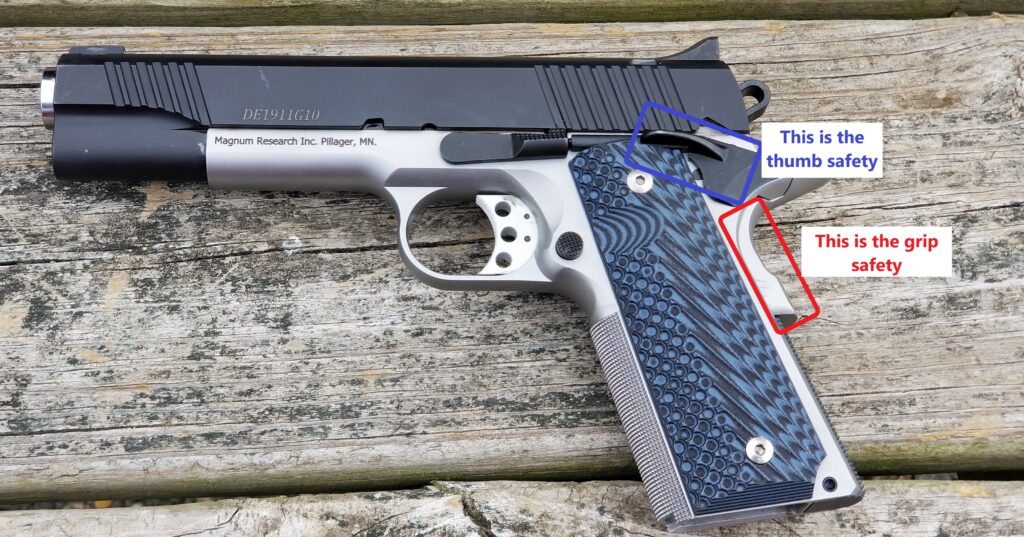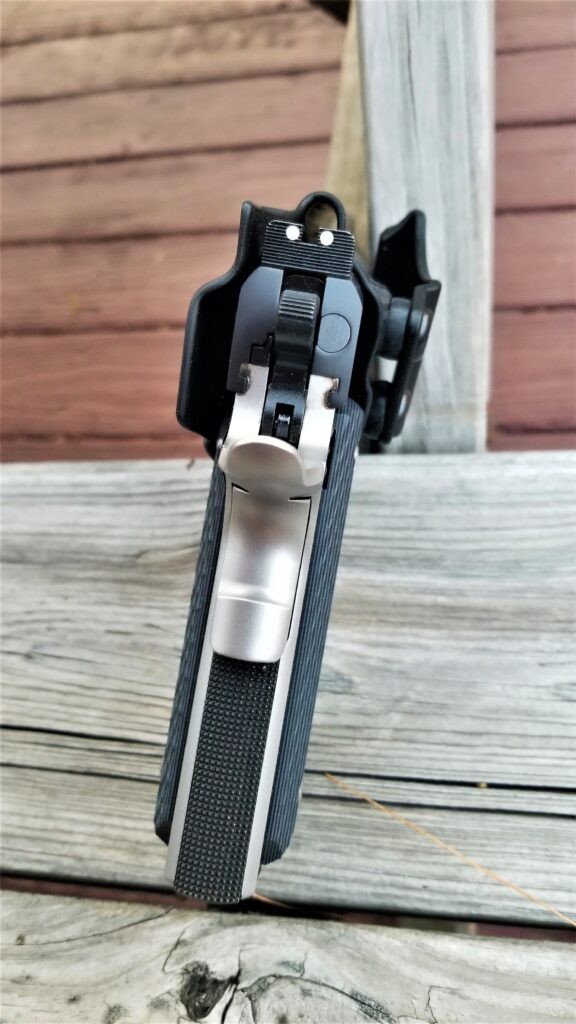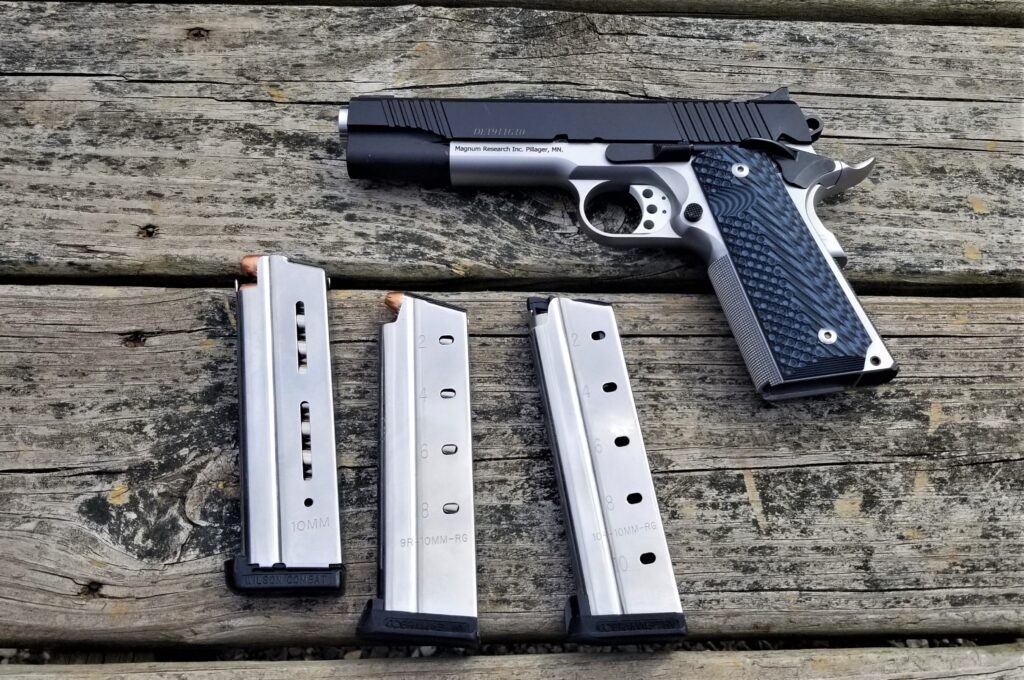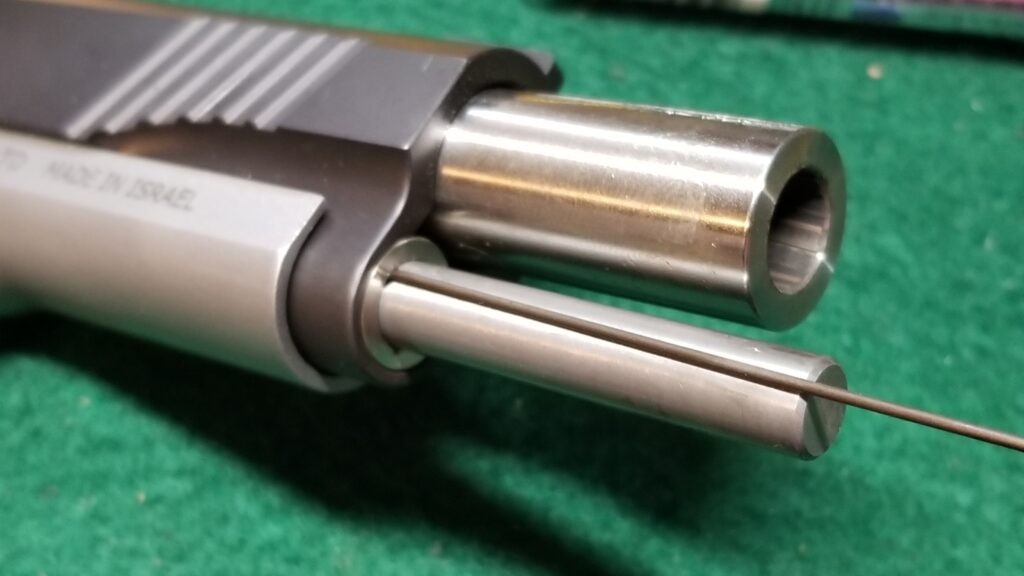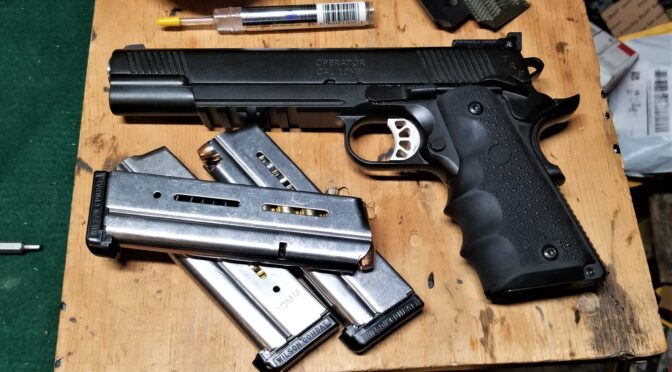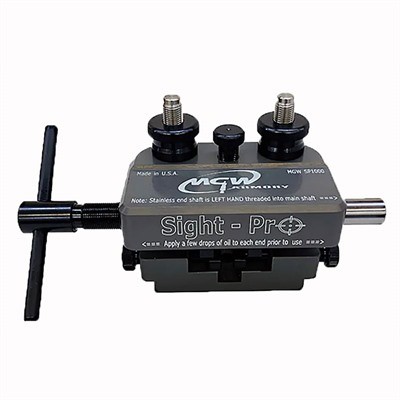Well folks, at one point I had three 1911-style 10mm pistols. A Magnum Research Desert Eagle (model DE1911G10), a Rock Island Armory (RIA) Rock Ultra FS HC (model 52009) and a Springfield Armory TRP Operator (model PC9610L18). While I like the 10mm cartridge, I didn’t really need three pistols so I decided to take them to the range to decide what I would keep and what I would sell.
The Ammo
I took with me about 200 rounds of Ammo Inc’s 180gr TMC load that I had purchased from Palmetto State Armory during one of their daily deals. TMC stands for “total metal case” – meaning the lead is fully encapsulated by the copper jacket. With full metal jacket (FMC) ammo, the base often has the lead core exposed. Ammo Inc is interesting in that they decided to go the public company route and we’ll have to wait and see how they fare when the panic buying dies down.
I also took about 200 rounds of Sellier & Bellot (S&B) 180gr FMJ ammo as well. It’s been my “go to ” 100 range ammo for years. If you don’t know S&B, they are an excellent ammunition producer located in the Czech Republic dating back to 1825.
To round out the test ammo, I took some Underwood 155gr XTP and 200gr XTP jacketed hollow points (JHP). I only had about 50 rounds of this and I wanted to save it for the final round of testing.
For the past six months, finding ammo has been a bear but suppliers are starting to build up inventory. Judging by my inbox, more and more emails are being sent saying “we have ammo in stock” and even a few sales. These tend to come shortly before prices start to drop based on past panic buying ammo shortages [click here for my blog post on the economics of ammo during a panic].
The Range
It was a beautiful March day when I arrived at the Berrien County Sportsman’s Club to use the pistol plate range. The plates are about 30-35′ feet back from the firing line and I had it all to myself.
BCSC is my favorite range hands down and I have been a member there for many years. Definitely a cool place for a variety of sportsman and family activities.

First, the 6″ TRP Operator
As I have written in the past, the TRP Operator was not reliable out of the box and this was a do or die outing for the pistol in terms of whether I would keep or sell it. The TRP Operator is basically a 6″ 1911 and the marketing would lead you to expect that it would have been stunning out of the box but it wasn’t to be perfectly blunt.
Thankfully, after work both myself and Springfield Armory’s repair groups did, it finally handled the way it should have when I first got it. This time around, functioning was reliable and the recoil was handled nicely by the heavy pistol with it’s 6″ bull barrel.
I was able to fire round after round at the plates at 30-35 feet and hit them. I really wasn’t shooting for benchrest accuracy – just shooting at plates to decide what to do.


In summary for the TRP, it ran just fine but it did nothing to wow me.
Next – The Magnum Research Desert Eagle (model DE1911G10) by Bul Armory
Okay, next up on the testing list for the first time was my new Desert Eagle 10mm that is actually made by Bul Armory of Israel. Out of the box it had the best trigger of any 1911 I have owned and the action was very smooth.
Now I have written about this particular pistol going to the range before – it’s just that I am finally sitting down to write this bigger post about all three pistols just under two months after the range trip. Here are a few pictures for you:


Let me sum it up and say – I really, really like this pistol. It functioned flawlessly and felt great. With the TRP, I was not impressed by the time it finally worked right. The Bul’s performance was nothing short of fantastic.
Last But Not Least: The Rock Island Armory (RIA) Rock Ultra FS HC (model 52009)
This was the first trip for the RIA Rock Ultra FS HC – let’s just call it the 52009. I wrote a blog post about my first takes and things were looking good so far. At any rate, I knew with the RIA pistols that you needed to clean and lube them plus I slightly beveled the chamber edges and polished the ramp.
I was really curious to see how it would function not only in general but also with the new magazines I was making for them. I also wanted a higher capacity 10mm 1911 if possible so there was a lot riding on the trip.



To sum up the 52009 – it was starting to wear in and felt surprisingly good. I sure missed having the front serrations on the slide because by the end my hands were starting to ache and my ability to squeeze hard enough to hold the slide and rack it was dwindling.
Once I identified the good mags and problem mags and focused my efforts, it ran great. I was quite pleased with it and I can tell you now that I have cycled it thousands of times fitting magazines, it is quite smooth. The 52009 and RIA 1911/2011 pistols in general are really good examples of parts need to wear in, or get to know each other, to get rid of tiny burrs/imperfections left over from manufacturing.
Would I buy it again? Yes. Was it my first choice? No, actually it wasn’t. I really wanted a high cap 5″ pistol styled after one of their Tac or Tac Ultra pistols that has the forward serrations and a Picatinny rail on the bottom of the frame. The reason being is that they are lighter and more compact than the 6″ Big Rock that I had years ago. Their 56862 model has a 5.5″ threaded barrel (hence the extra half inch) that I would have preferred but with the panic buying, it is impossible to find. Who knows – I may find one some day.
In the mean time, my only wish was that the 52009 hand front serrations – other than that it is a solid pistol.
Final Decision
As you can probably guess, the TRP Operator was voted off the island and my friend, and FFL, Scott Igert sold it for me. I felt pretty good about the decision too.
What’s interesting is that if you go to the Springfield Armory website today – the 10mm TRP Operator is gone. It could be that the demand just wasn’t there. I talked to a fellow at Dawson Precision awhile back about Stacattos (STI changed their name a few months back) and if they had any 10mm pistols because they used to have a number of models including the “Perfect 10.”) At any rate, he told me the demand just isn’t there – everyone is going for the 9mms these days. That might be the case for Springfield though I notice they are offering their Ronin model in 10mm.

That’s it for now. I hope you found this post useful.
Note, I have to buy all of my parts – nothing here was paid for by sponsors, etc. I do make a small amount if you click on an ad and buy something but that is it. You’re getting my real opinion on stuff.
If you find this post useful, please share the link on Facebook, with your friends, etc. Your support is much appreciated and if you have any feedback, please email me at in**@*********ps.com. Please note that for links to other websites, we are only paid if there is an affiliate program such as Avantlink, Impact, Amazon and eBay and only if you purchase something. If you’d like to directly contribute towards our continued reporting, please visit our funding page.














